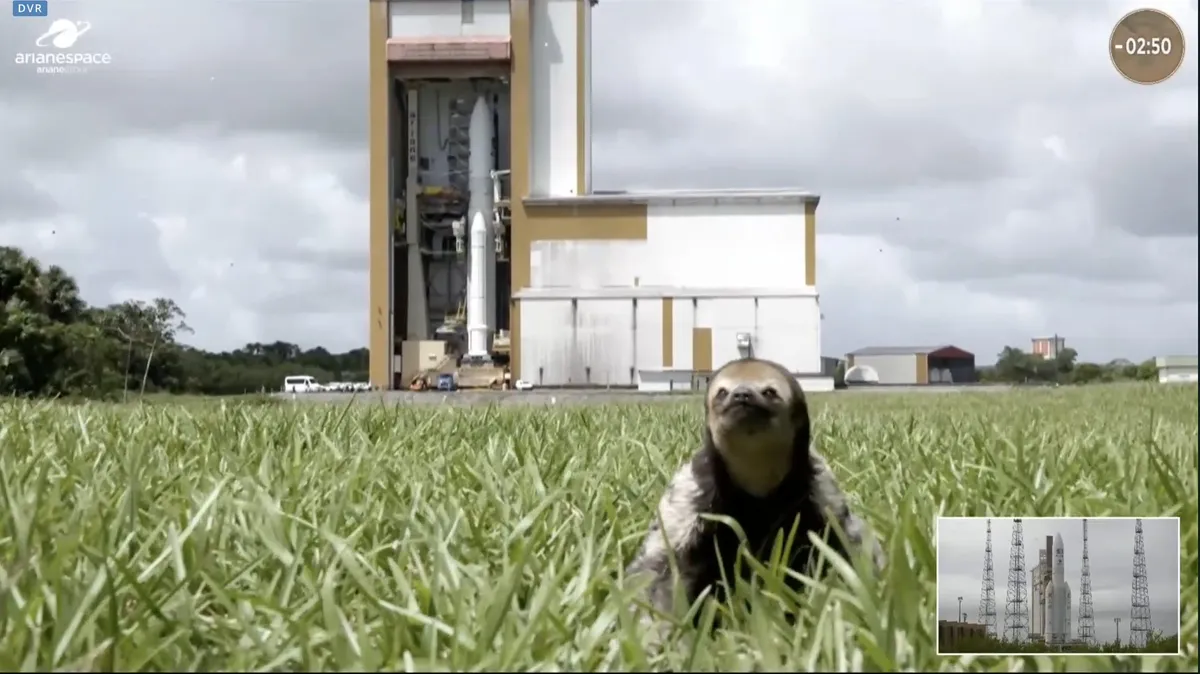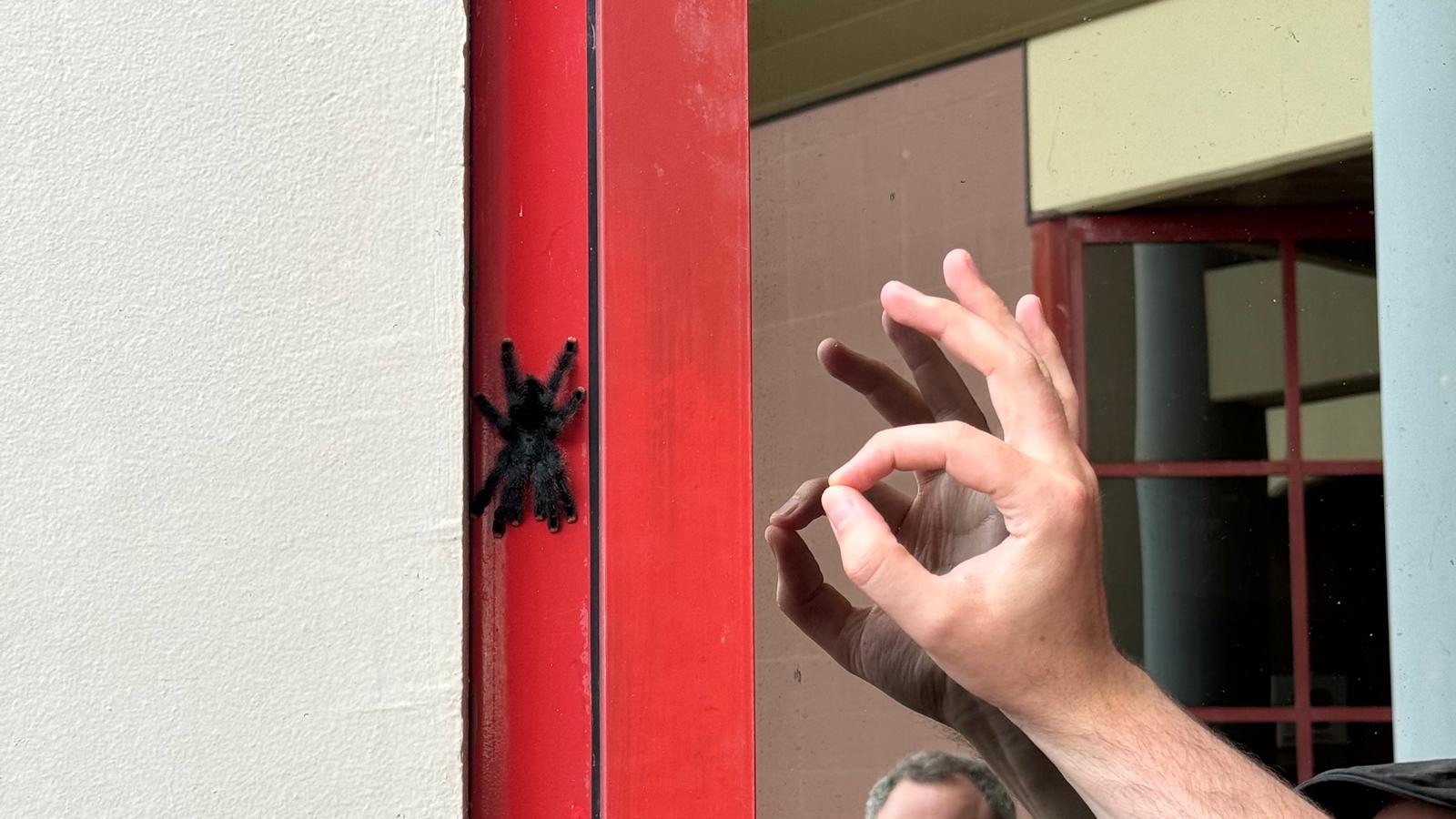Portrayals of futuristic activity seldom include nature in its wildest state. Sure, there are intriguing visions of the future where the two coexist but usually, we see the wild in opposition to the sleek aluminum-colored vision of the day after tomorrow. In reality, this is not true. Around the world, nature and cutting-edge technologies already coexist, and when it comes to some spaceports – curiously, they thrive.
Spaceports across the world require vast areas to make sure rocket launches are far enough away from people to operate safely. Those large spaces are not barren, though, quite the opposite. They are full of living things, creating areas where many species are protected even though they spend their days next to some of the most advanced vehicles ever built. Looking around at different sites, this partnership is unusual but mutually beneficial.
Take, for example, NASA’s Kennedy Space Center (KSC) in Florida, which shares a border with the Merritt Island National Wildlife Refuge. It is home to over 1,000 species of plants, 117 species of fish, 68 amphibian and reptile species, 330 birds, and 31 different mammal species. That is a lot of life.
Kennedy [Space Center] is responsible for more protected species than any other federal property in the continental United States.
Donald Dankert
“Kennedy is responsible for more protected species than any other federal property in the continental United States,” Donald Dankert, the Chief of Kennedy’s Environmental Management Branch, told IFLScience.

An American bald eagle occupies a nest near Kennedy Parkway North at NASA’s Kennedy Space Center.
Image Credit: NASA/Ben Smegelsky
This is not an American exclusive. Europe’s Spaceport in Kourou, French Guiana was established in 1964, and soon after people started looking after the nature on its doorstep. In fact, the French Forestry Commission (ONF) began working at the Guiana Space Centre in 1966, two years before the first rocket was ever launched.
Operated by CNES, the French Space Agency, the space center has been working with the French Biodiversity Office (OFB) to track large animals, the Institut Pasteur to analyze chemical fall-out from launches, and engineering consulting companies to monitor air and water quality in the area. The spaceport has all the habitats found in French Guiana, including savannas, beaches, marshes, swamps, mangroves, and forests.
Camera traps have immortalized jaguars, pumas, giant ants, peccaries, curassows, deer, and ocelots. Through the surveys we’ve been doing for more than 30 years now, we’re still discovering new species all the time.
Dr Camille Bonhomme
“Today, the base is home to more than 500 species of bird, nearly 100 species of fish, and more than 1,000 catalogued species of plant (lianas, trees, herbaceous plants, orchids, carnivorous plants, etc.), including protected species,” Dr Camille Bonhomme, Doctor of Ecology and CNES Environmental Engineer, told IFLScience.
“For example, ONF and OFB regularly set up camera traps that have immortalized jaguars, pumas, giant ants, peccaries, curassows, deer, ocelots, and much more besides. And through the surveys we’ve been doing for more than 30 years now, we’re still discovering new species all the time!”

NASA’s Kennedy Space Center in Merritt Island, Florida with SpaceX’s Axiom-1 in the foreground on Launch Pad 39A and NASA’s Artemis I in the background on Launch Pad 39B, taken in 2022.
Image Credit: NASA/Jamie Peer
In both sites, the human facilities are a small fraction of the area. This means that the buffer zones can be as wild as nature is willing to make them. Continuous monitoring has shown that the impact of the launches from these two sites doesn’t affect the living organisms at the spaceport or the people living just outside it.
“Through years of study and ecological monitoring, we have determined that acute impacts of the Space Shuttle program on KSC’s natural resources were minimal and those impacts are expected to remain the same with the Artemis Program. The results of our long-term ecological program have shown no long-term, macro-scale, impacts to KSC’s ecological communities,” Dankert explained to IFLScience.
“Additionally, we study and assess ecosystem health and, when necessary, develop mitigation strategies to protect critical habitat as well as the wildlife that calls Kennedy home,” he said. Words echoed by the team in French Guiana where the data of particle fall-out in air and water is measured across the site and even in the cities of Kourou and Sinnamary, which border the space center. No particles have been detected further than 1 kilometer (0.6 miles) from the launchpad.
Results consistently show that the flora and fauna at the base are in very good health.
Dr Camille Bonhomme
“We conduct analyses to measure the impact of every launch, but we also keep a close eye on the health of ecosystems all year round,” Dr Bonhomme explained. “We also measure the long-term impact of space operations on flora and fauna, with independent monitoring of large wildlife, fish, aquatic invertebrates, diatoms, bees, and rare plants at the base. Results consistently show that the flora and fauna at the base are in very good health.”
This doesn’t mean that some intrepid (or oblivious) animal can’t get too close to a rocket. There is the famous viral photo of the unfortunate frog, fate unknown, caught mid-air and backlit by the launching LADEE spacecraft, although that was in Virginia.
At Kourou, a sloth, subsequently named Gérard, stole the internet’s hearts when it somehow managed to find its way near the Ariane 5 rocket integration facility during a live stream. Luckily, it was not near the launchpad but still close enough to human activity that it had to be scooped up and taken back to the forest. Its walkabout coincided with the launch of JUICE, the European Space Agency’s mission to Jupiter, and appeared on the livestream just 2 minutes and 50 seconds before the launch took place just a few kilometers away. Photos of the incident show Gérard quite unbothered by the whole experience.

Gérard The Sloth stealing the spotlight from the JUICE launch.
Image Credit: ESA/N.Drake/
Ecologists are working side by side with mission teams to make sure that the impact of launches continues to be minimized, even as the number of launches at the facilities increases. That said not all launch sites are the same. SpaceX’s Starvase launchpad in Boca Chica, Texas, has been accused of multiple environmental violations.
“NASA’s environmental policy is to execute the agency’s mission without compromising our planet’s resources so that future generations can meet their needs. This also means taking action to provide a future where the environment and living conditions are protected and enhanced,” Dankert told IFLScience.
“In implementing these practices, NASA manages risks to mission, the environment, and to our communities. To this end, NASA seeks to use public funds efficiently and effectively, promote the health of the planet, and operate in a way that benefits our neighbors.”

A pinktoed tarantula on the door of the mission control center when IFLScience visited Kourou for the launch of Ariane 6.
Image Credit: Alfredo Carpineti/IFLScience
The space center in French Guiana technically doesn’t qualify as a nature reserve in the legal sense, as it is an industrial facility but its conservation approaches far exceed an industrial facility’s expected environmental requirements. For example, it hosts 40 percent of all the savannas found in French Guiana. That’s a habitat that covers just 1 percent of the region but is home to 16 percent of its floral diversity. Its conservation is incredibly important.
“CNES is committed to achieving sustainable development. We’ve been a signatory to the Act4nature programme since 2019. And we’ve drafted a biodiversity management plan with ONF in place since 2010 based on the template for nature reserves in France. This enables us to organize and structure what we’re doing to foster biodiversity so that our actions are consistent over the long term,” Dr Bonhomme told IFLScience.
The Kennedy Space Center and Europe’s Spaceport might be just two examples but they show that the most advanced technology doesn’t have to cost the planet. Coexistence with nature is more than possible, it might even be a revolutionary approach to a better, healthier future.
Source Link: The Unlikely Coexistence Of Spaceships And Wild Nature Around The World